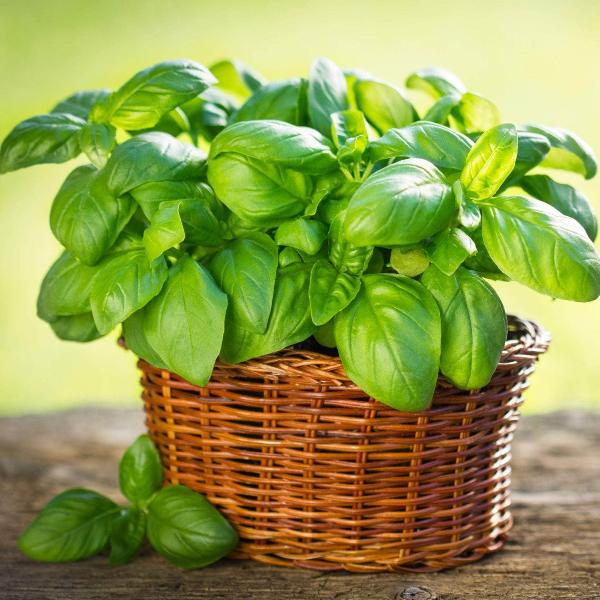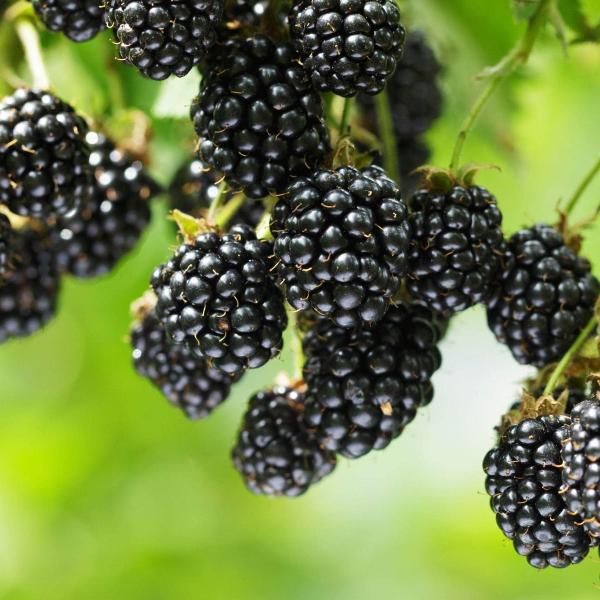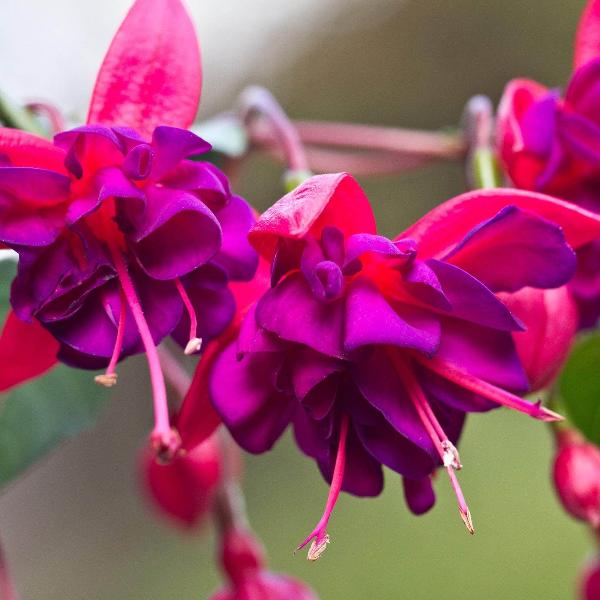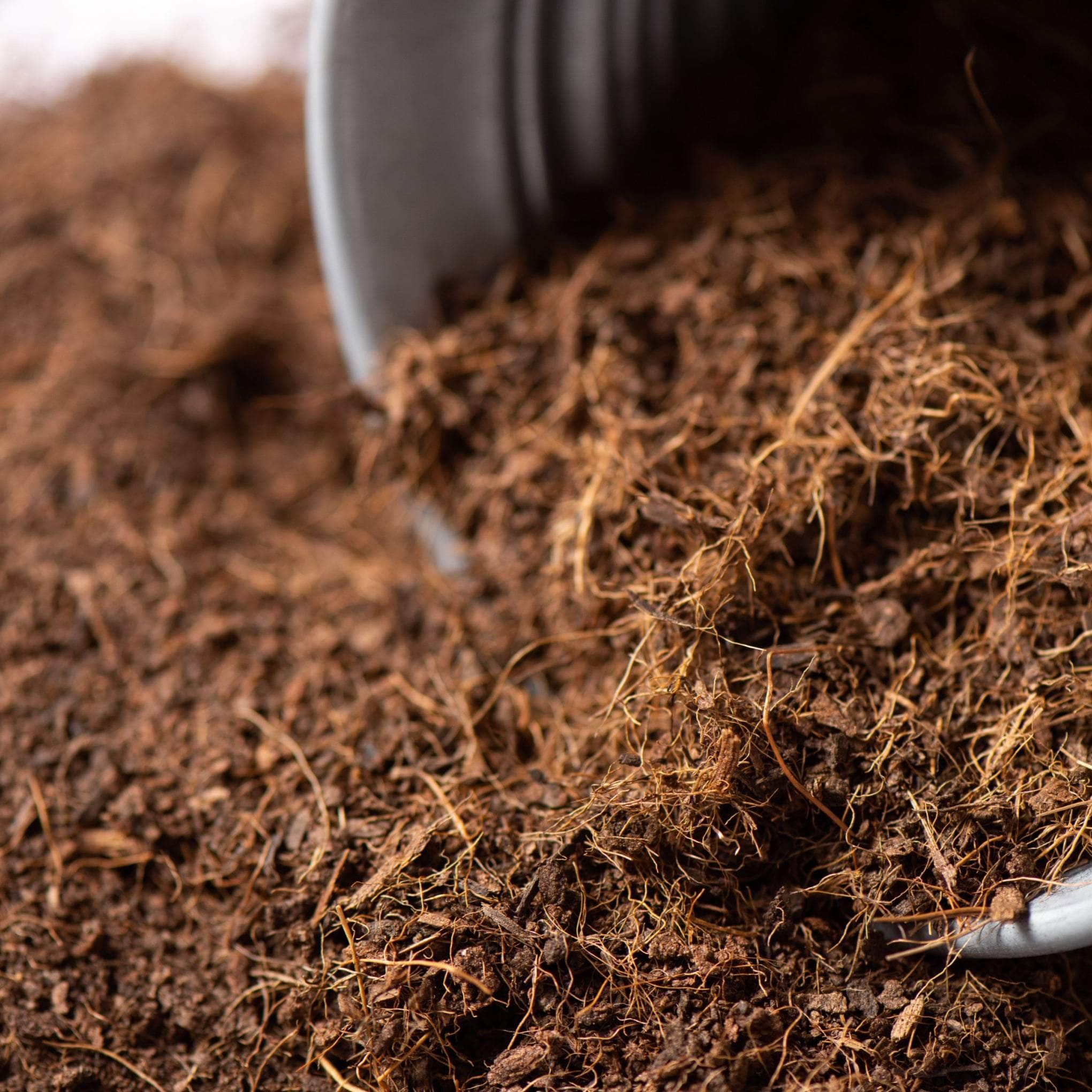The Comprehensive Guide to Growing Radishes
Welcome to our comprehensive guide on how to grow radishes. Whether you're a seasoned gardener or a green-fingered novice, this guide will provide you with all the information you need to sow radish seeds and cultivate a thriving crop. From understanding the history of the humble radish to exploring the different varieties, we'll delve into the world of Raphanus Sativus.
We'll guide you through the process of sowing radish seeds, caring for your plants post-sowing, and even how to manage pests and infections. So, whether you're looking to grow a summer variety that can tolerate moderate heat or a winter variety that thrives in cooler temperatures, we've got you covered. Let's embark on this gardening journey together and discover the joy of growing radishes.
Stay tuned, green thumbs, and let's get sowing!
Understanding Radishes: An Introduction to Raphanus Sativus

Radishes, scientifically known as Raphanus sativus, are a versatile and vibrant root vegetable that have been a staple in diets across the globe for centuries. From the small, fiery red summer radishes to the large, mild-flavoured winter radishes, there's a variety to suit every palate.
These hardy plants, with their distinctive green tops, are not just a culinary delight but also a gardener's friend. They're easy to grow, making them a favourite among both novice and experienced gardeners. Whether you're a fan of the heirloom radish variety or prefer the more common types, understanding the radish plant is the first step to successfully growing these fiery gems.
The Origin and Cultivation History of Radishes
The humble radish, or Raphanus sativus, as botanists refer to it, has a rich and remarkable history that traces back to Southeast Asia. Radishes were one of the earliest crops cultivated in this region, and even today, wild variants of the plant can be found abundantly in the local terrain.
As early as ancient civilizations, radishes were an esteemed part of diets, with both the Romans and Egyptians being known to grow and consume them. Some of the earliest cultivars of radishes were rather large and coarse, capable of reaching weight up to 100 lbs, solidifying their roles as winter-vital crops.
From its native land, the radish journeyed west, touching various corners of the world. Spanish explorers, for example, carried these spunky vegetables during their expeditions to the Americas in mid-1500s. The radishes won hearts rapidly, gaining an essential position in the local gardens, or potagers.
Although small red radishes are the commonly visualized type, radish variety is extensive, boasting a range of colours- from white and yellow, to green and even black. They also vary in size with some, like the Daikon radish, growing up to 24 inches long. These beauties are not just vibrant in appearance, but also nutrient-rich, making them much more than just an ordinary root vegetable.
Optimal Growing Conditions for Radishes

Radishes, with their vibrant colours and crisp, peppery bite, are a delight to grow in any garden. However, to ensure a successful harvest, it's crucial to understand the optimal growing conditions for these root vegetables and how to plant radish. From the amount of sunlight they need to the type of soil they prefer, every aspect plays a significant role in their growth and development.
In this section, we'll delve into the specifics of these conditions, discussing how radishes respond to different levels of sunlight, their temperature tolerance, and their soil preferences. By understanding these factors, you can create an environment that allows your radishes to thrive, whether you're growing them in your backyard or a container garden.
Understanding Sunlight Requirements for Radishes
Radishes are nifty growers, demonstrating considerable versatility when it comes to sunlight requirements. As sun-loving plants, they ideally appreciate a spot that receives direct sunlight for at least six hours a day. Indulgence in this bright exposure encourages radishes to invest their energy into producing tasty, mildly peppery roots rather than just focusing on leaf growth.
However, their charm lies in their adaptability. They've got the grit to stand strong in partial shade too, making them suitable candidates for gardens with tree or structure shading. A crucial point to realise here is that they don't abandon their sun convinctiones, even when they're under the shade.
And, for those of us dwelling in hotter climes, there's still good news. In the feverish height of summer, our little radish friends can manage very well in full shade. It's exceptional how they somehow figure out the right balance between shade and sun to conserve their energy and continue to fruitfully produce roots.
So, whether you're planting radishes in your backyard garden or employing them as space-fillers between larger vegetables, knowing their tolerant sunlight requirements works wonders in achieving a successful radish crop.
Temperature Tolerance of Radishes
Radishes are hardy vegetables that boast a robust tolerance for a range of temperatures. Depending on the type of radish, they can handle either cool or warm conditions, acting as a staple for various seasons.
Early and midseason radish varieties, for instance, can comfortably tolerate temperatures of moderate heat, expanding the scope for their cultivation from May through August. These do well in cooler temps, too, hence their early spring cycle, but may mature slower.
The strains of heat tolerance are present even in late-season varieties or 'winter radishes.' These larger varieties flourish under tranquil climatic conditions that fall beneath 55°F. They even demonstrate impressive resistance under freezing temperatures occasionally, making them popular among gardeners with cooler climates.
On the flip side, they still have their limits. High summer temperatures might lead to situations where the radishes bolt, inviting premature flowering resulting in skimpy, less crunchy roots. To counter this, cultivators sometimes deploy shade cloths over the plants to cool things down a notch when the heat threatens to turn brutal.
Soil Preferences of Radishes
Radishes, like many other root vegetables, show a distinct preference for loose, fertile, warm soil that is rich in organic matter. This preference is not unfounded since radishes have a medium to heavy feeding habit. The texture and nutritional profile of the soil significantly affect the growth and taste of radishes.
The pH of the soil is a critical factor in achieving a successful harvest. Radishes prefer neutral-to-slightly-acidic soil, generally with a pH range of 6.0—7.0. Match the soil pH with this range, and you will create a favourable environment for your radishes.
The importance of soil moisture can never be overstated. Radishes need constant soil moisture to flourish and produce deliciously crisp and juicy roots. Drought conditions or dry soil can lead to undesirable outcomes like woody, hard roots or roots that crack.
Excessive use of high nitrogen fertilisers is a no-no when growing radishes. Such fertilisers tend to trigger an overgrowth of leaves at the expense of root development. Instead, aim for a balanced NPK fertiliser or compost. Remember, radishes aren’t just another vegetable; they are a wonder of nature that deserves the right soil. Practice cautious fertilising, frequent watering, and meticulous soil preparation for an attractive and tasty yield.
Radish Varieties: From Summer to Winter Radishes

In the world of radishes, variety is the spice of life. From the early bloomers of spring to the robust winter types, there's a radish for every season and every palate. This section will take you on a journey through the diverse world of radishes, exploring the unique characteristics of summer and winter varieties.
Whether you're a fan of the mild, crisp taste of a summer radish or the hearty, spicy flavour of a tasty winter radish, understanding the different varieties can help you choose the perfect radish for your garden. Let's delve into the colourful and flavourful world of radishes.
Exploring Summer Radish Varieties
Here are some varieties of radishes you might want to consider for your garden in the summer:
'Burpee White': This small, spring variety is an heirloom radish with crisp white flesh. It's noted for its mild flavour.
'Champion': Also a spring variety, 'Champion' is bright scarlet with firm, crisp white flesh. Its taste is quite mild.
'Cherry Belle': This small type is an heirloom radish which is round in shape and has red skin with white flesh. The flavour of this radish is crisp and light.
'Marabelle': Producing beautiful, marble-sized roots complemented by small crowns of greens, 'Marabelle' is outstanding for its visual appeal.
'Sora': What makes 'Sora' notable is its ability to handle warmer weather better than other summer radish varieties.
Remember, summer radishes, often referred to as early radishes, typically mature within 30 days, and are perfect for those who want a quick crop.
Understanding Winter Radish Varieties
Daikon - This radish grows up to 14 inches long and is often favoured for cooler climates or during the colder seasons. With a crisp and snappy taste, it's a staple in many Asian cuisines.
Spanish Black - As the name suggests, this variety hails from Spain. Known for its large turnip-shaped globes, it offers a uniquely crisp, pungent and spicy taste. Perfect for storing, it ensures you always have radishes on hand.
Watermelon - This is an heirloom Daikon radish variety. Notable for their striking white skin and bright red inners, they boast a mild flavour with a light peppery tang.
Japanese Mooli - This radish is sought after for its mild flavour that is not only great for salads but also works beautifully in soups and stews.
Chinese and Korean varieties - These radishes also showcase mild flavours and are commonly grown in cooler temperatures.
Red Meat - Originating from China, this baseball-sized cultivar shows off with its white skin and hot-pink flesh. It cooks quickly and is perfect for those looking for a spicy kick.
Take note that cold weather radishes are generally leafier than their summer counterparts. Their spicy leaves can be used like spinach, adding a unique touch to your hot dishes or to make a spicy pesto. Remember to sow them a little further apart to give each plant enough space to grow. Keep in mind, these radishes typically take six to eight weeks to mature.
Choosing the Right Radish Variety for Your Garden
When it comes to selecting the right radish variety for your garden, there are a few factors you must take into account. The key considerations are the weather conditions of your area and the available space in your garden.
For instance, smaller radish varieties like 'Burpee White' or 'German Giant', best fit if you have limited garden space. Their small size means they don't take much room whilst offering an array of colour and taste. They're often known as early radishes, due to their quick growth, perfect for an early spring harvest.
On the other hand, larger, winter varieties such as 'Spanish Black' or 'Watermelon' require a bit more space to grow but offer a bolder taste. Radishes like 'Daikon' are well adapted to cooler climates, making them perfect for late summer or autumn planting. They're often starchier and stronger in flavour.
The right radish variety can transform your garden and your plate alike. Choose wisely, plant passionately, and let this humble veggie surprise you with its versatility.
Managing Pests and Diseases in Radish Plants

Growing radishes can be a rewarding experience, but it's not without its challenges. One of the most significant hurdles that gardeners face is managing pests and infections that can affect the health and yield of radish plants. These issues can range from common pests like root maggots and flea beetles to diseases such as damping off and root knot nematode.
Understanding how to effectively manage these threats is crucial for anyone looking to successfully grow radish from seed. In the following sections, we'll delve into the common pests and infections that affect radish plants, and provide practical advice on how to prevent and treat these issues.
Common Pests in Radish Cultivation
Root Maggots: These pests are the hatching larvae from insects in the Anthomyiidea family. They commonly pose a threat to radish crops due to their propensity for damaging the root system.
Flea Beetles: Belonging to the Chrysomelidae family, these leaf-eating beetles may harm radish plants by decimating their foliage, hampering photosynthesis, and eventually affecting their health and growth.
Slugs and Snails: Young radish leaves are a particular favourite of these pests. They may cause significant damage by gnawing on the foliage.
Successful pest management starts with identifying the problem accurately. Stay vigilant to detect pest activity as early as possible and protect your radish sow from these precarious pests.
Diseases Affecting Radish Plants
Fungal Damping Off Disease: Caused by Rhizoctonia spp., this disease presents as water-soaked lesions at the base of radish stems, leading to the collapse of young seedlings. It’s a severe issue, and prevention is crucial.
Root Knot Nematode: Meloidogyne spp. is a microscopic pest that causes galls or knots on radish roots, resulting in stunted growth and wilting.
Clubroot: Plasmodiophora brassicae causes swelling or clubs on the roots of the radish plant, leading to wilting during hotter periods. It’s primarily an issue in soils with a high pH.
Fusarium Wilt: Caused by Fusarium oxysporum f. sp. raphani, this disease causes wilting and yellowing of the leaves, leading to the eventual death of the radish plant.
Alternaria Leaf Spot and Pod Spot: These diseases, caused by Alternaria brassicicola and Alternaria raphani respectively, result in the appearance of dark spots on leaves or pods, often accompanied by concentric rings.
These diseases can impact the healthy growth and yield of the radish plant. Hence, knowing how to identify them will help in the timely treatment and reduction of loss.
Preventive Measures and Treatment Options
When cultivating your own radish plant, it's crucial to make pre-emptive moves to prevent pests and diseases from harming your yield. Keeping your radishes robust and primed for deterring pests is pivotal. Practising a crop rotation method every three years is an excellent way to deter root maggots as it prevents radishes from being sown where cabbages or other brassicas have previously grown, which are hotspots for these pests.
Another common adversary of the radish is the flea beetle. These leaf-eaters can damage your radishes significantly. To combat this, using a floating row cover will shield your sown radishes, effectively cutting off the beetles from your plants.
The healthier your radish sow, the better its defence against pest and disease invasions. Ensure that seedlings are watered at the soil level to avoid developing damp conditions on the foliage, as this could foster disease. Keep your seedlings hearty, and avoid overcrowding to ensure their strength as they grow your radishes from seed to harvest.
Harvesting and Storing Radishes

In the journey of growing radishes, the final and most rewarding steps are harvesting and storing your produce. This section will guide you through the process of harvesting radishes at the right time and storing them properly to maintain their freshness and flavour. Whether you're a seasoned gardener or a beginner, these tips will help you get the most out of your radish plants. So, let's dive into the world of radish plants harvesting and learn how to store radishes for longevity.
When and How to Harvest Radishes
The art of harvesting radishes lies in picking them at their prime maturity. Much like a watchful gardener, the observant eye will begin to notice a few key signs that demonstrate it's time to start the harvest. One key indication is the crown or "shoulder" of the radish starting to protrude above the topsoil. This usually happens when the radish plant's green growth above the soil has reached a height of about 6 to 8 inches.
Do not delay your harvest as radishes can go from being crisp, crunchy, and flavourful to woody and excessively spicy within days. Fun fact, even if some of your radishes bolt before you manage to harvest them, you can salvage the situation by leaving a few to develop seed pods which are quite delicious in salads!
Another pro tip to ensure you reap the best is to pull out the more significant radishes each occasion you harvest. This practice allows the remaining ones to develop further. Also, keep an eye on radishes that favour winter as they are different from their spring counterparts. They can tolerate being left in the ground for a few more weeks post maturity if the weather is cool. However, it would be best if you harvested them before the first frost sets in.
In short, radish plants harvesting is about the right timing. Harvest too early, and you will not allow your radish to reach its full potential, harvest too late, and you risk losing the crunchy, spicy morsel to turn solid and woody. Happy harvesting!
Storing Radishes for Longevity
When it comes to maintaining the freshness of your newly gathered radishes, proper storage is key. One of the first steps in ensuring longevity is separating the leaves from the roots. This helps both parts to retain their freshness for longer, so don't skip this step. Set aside the greens if you want to use them - they'll keep for a couple of days, while the roots can be stored for five to seven days.
Depending on the variety of radish, you might need to adjust your storage methods. Winter types, for instance, can remain in the ground until the first frost without compromising their flavour, thereby extending their storage period. If refrigerator storage is more convenient, you can keep these winter roots fresh for several weeks.
For greater longevity, consider using a root cellar and employ the use of straw for this process. Line a box with a thick layer of this multipurpose material and put the radishes in, before adding more layers of straw and a sprinkle of soil. This kind of traditional preservation technique helps keep the radishes fresh for a significant length of time.
When ready to use your stored radishes, simply wash them well, cut off the tops and the thin root end and pat them dry. Ensuring your radishes are thoroughly dry before returning them to the fridge will prevent early rot and hence ensure they last longer. Remember, nothing beats the satisfaction of crunching into a radish you've grown and stored yourself!
Embracing the Joy of Growing Radishes

In conclusion, the joy of growing radishes is a rewarding experience that every gardener should embrace. The process, from sowing seeds to harvesting the crisp, flavourful roots, is a testament to the wonders of nature and the satisfaction of home-grown produce. Whether you're a fan of the spicy summer variety or the milder late season radish, understanding how to grow radish from seed, and providing the right conditions for growth, can ensure a successful harvest.
Remember, radishes thrive in well-drained soil, require moderate heat, and should receive direct sunlight for optimal growth. So, why not give it a try?
With patience, care, and a little bit of wisdom, you'll be well on your way to becoming a radish-growing expert.
Happy gardening!










